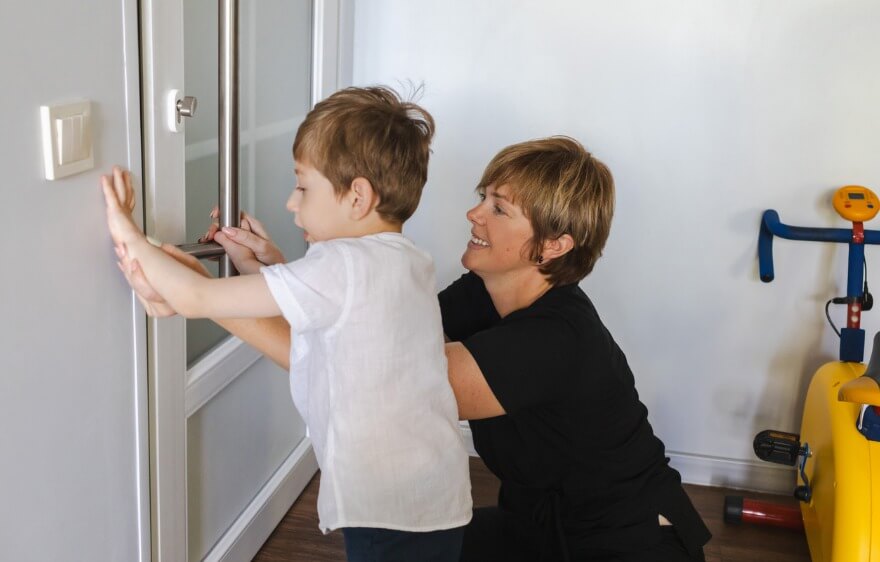Do you want to make a stellar first impression? Whether you’re an experienced OT or fresh out of school, landing your dream job starts with an outstanding cover letter. Your cover letter is your chance to make a great first impression and literally stand out from the crowd. It’s not just a formality—it’s a powerful tool to showcase your passion, experience, and qualifications in a way that makes a potential employer want to read your resume.
In this guide, you’ll learn why occupational therapy cover letters are essential, how to craft an effective one and see examples for specific positions such as pediatrics and home health. By the end, you’ll have the tools to create a cover letter that makes employers say, “We need to meet this OT!”
Why Occupational Therapy Cover Letters Are Important
Many job applicants think a cover letter is optional, but it’s an invaluable opportunity to set yourself apart as an occupational therapist. While your occupational therapy resume showcases your objective qualifications and experience, your cover letter gives you the chance to tell a story, express your enthusiasm, and connect your skills directly to the job you’re applying for.
Here’s why writing an occupational therapy cover letter is crucial:
- It personalizes your application. A resume is more of a static list of qualifications, but a cover letter allows you to speak directly to the hiring manager and explain why you’re the perfect fit for the role.
- It demonstrates your communication skills. You need excellent communication skills as an OT to work effectively with patients and their families. A well-written cover letter is the first proof that you have these skills.
- It connects your experience to the specific job. Every job has unique demands, and a cover letter lets you highlight the experience and skills most relevant to the position. It’s your chance to explain how your past work has prepared you to succeed in the role you’re applying for.
How to Write an Occupational Therapy Cover Letter
Writing a cover letter may seem daunting, but with the proper structure and approach, you can create one that showcases your expertise and enthusiasm. Follow these steps to craft a compelling occupational therapy cover letter.
1. Start With a Professional Greeting
Addressing your cover letter to the right person shows attention to detail and professionalism. Do your research to find the hiring manager’s name. If you can’t find it, “Dear Hiring Manager” works as a professional alternative.
Example: “Dear [Hiring Manager’s Name],”
“Dear Hiring Manager,”
2. Introduce Yourself With Enthusiasm
Your opening paragraph is your chance to grab the reader’s attention and set the tone for the rest of the letter. Briefly introduce yourself, mention the role you’re applying for, and express your excitement about the opportunity.
Example: “I’m excited to apply for the Pediatric Occupational Therapist position at [Organization Name]. With my passion for helping children reach their full potential and my hands-on experience in pediatric care, I’m confident I would be a valuable addition to your team.”
3. Highlight Your Experience and Skills
In the next section, summarize your relevant experience and skills, focusing on how they align with the job requirements. Make sure to mention specific duties or experiences from your previous positions that show your ability to succeed. If possible, include numbers or examples to quantify your impact.
Example: “In my current role as an OT at [Current Position], I have worked with children aged two to 12, providing personalized therapy plans to address fine motor skills, sensory processing issues, and social-emotional development. Over the past two years, I’ve helped 90% of my pediatric clients meet or exceed their therapy goals within six months.”
4. Demonstrate Your Passion for Occupational Therapy
Employers want to hire OTs who are genuinely passionate about their work. Use your cover letter to explain why you love being an OT and what drives you to make a difference in people’s lives.
Example: “I became an occupational therapist because I believe in empowering people to live fuller, more independent lives. Helping children overcome developmental challenges and achieve milestones gives me a profound sense of fulfillment, and I am always seeking new ways to grow in my field.”
5. Connect Your Skills to the Specific Role
Tailor your cover letter to the job you’re applying for by referencing the skills and qualifications the employer is looking for. Review the job description and identify essential qualifications, then explain how your experience meets those needs.
Example: “Your job posting mentioned the need for experience in sensory integration therapy and working with children who have autism spectrum disorder. In my current role, I’ve developed specialized sensory integration therapy programs and have worked extensively with children on the autism spectrum to improve their ability to focus, interact socially, and participate in everyday activities.”
6. End With a Call to Action
Finish your cover letter by restating your enthusiasm for the position and inviting the employer to contact you for an interview. Keep the tone polite but confident.
Example: “I would love the opportunity to discuss how my skills and experience can benefit your team. Please feel free to contact me at [phone number] or [email address] to schedule an interview. Thank you for your consideration, and I look forward to hearing from you soon.”
7. Sign Off Professionally
End your letter with a formal closing such as “Sincerely” or “Best regards” followed by your full name.
Example: “Sincerely,
[Your Name], MS, OTR/L”
Occupational Therapy Cover Letter Examples
Now that you know the steps to writing a great occupational therapy cover letter, let’s take a look at a few examples for different specialties.
Example 1: Pediatric Occupational Therapist
Dear [Hiring Manager’s Name],
I am excited to apply for the Pediatric Occupational Therapist position at [Organization Name]. With more than three years of experience working with children in early intervention programs and a deep passion for supporting developmental growth, I am confident I can positively impact your team and the children you serve.
In my current role at [Current Position], I have worked with children aged two to seven to develop personalized treatment plans that address sensory processing disorders, fine motor delays, and social-emotional difficulties. I have successfully helped 85% of my clients achieve their therapy goals and collaborated closely with families to provide holistic care. I’m exceptionally skilled in play-based therapy and sensory integration techniques, which I understand are critical components of your clinic’s services.
I would love to bring my expertise and enthusiasm for pediatric occupational therapy to [Organization Name]. Please feel free to contact me at [your phone number] to arrange a time to discuss how I can contribute to your team. Thank you for considering my application.
Sincerely,
[Your Name] MS, OTR/L
Example 2: Home Health Occupational Therapist
Dear [Hiring Manager’s Name],
I am writing to express my interest in the Home Health Occupational Therapist position at [Organization]. With a strong background in providing home-based therapy and a dedication to improving patient independence, I can provide high-quality care to your clients.
For the past four years, I’ve worked with clients in home health settings, developing therapy plans that address physical, cognitive, and ADL (Activities of Daily Living) challenges. I take pride in creating therapy strategies that fit seamlessly into my clients’ daily routines, allowing them to regain independence in their own homes. In my current role, I’ve reduced rehospitalization rates for my patients by 25%, highlighting my ability to deliver effective, person-centered care.
I am eager to bring my skills to [Clinic Name] and help your clients achieve their personal goals. I look forward to the opportunity to speak with you further. Please feel free to contact me at [your phone number] to arrange an interview.
Best regards,
[Your Name], OTR/L
Example 3: New Grad Occupational Therapist
Dear [Hiring Manager’s Name],
I am thrilled to apply for the Occupational Therapist position at [Organization Name]. As a recent graduate from [OT Program]with a Master’s degree in Occupational Therapy, I am eager to apply my knowledge and clinical experience to help patients regain independence and improve their quality of life.
During my clinical rotations, I gained hands-on experience working with a variety of patient populations, including children with developmental delays and adults recovering from stroke. My supervisor praised my ability to connect with patients and customize therapy plans to suit their unique needs. I am particularly interested in joining your clinic because of your emphasis on evidence-based practice and patient-centered care.
I would love the opportunity to discuss how my skills and enthusiasm can benefit [Organization Name]. Thank you for considering my application, and I look forward to hearing from you soon.
Sincerely,
[Your Name], MS, OTR/L
Jumpstart Your Career With a Winning Occupational Therapy Cover Letter
Writing a cover letter as an occupational therapist is an opportunity to showcase your passion, expertise, and commitment to helping others. By following the steps outlined in this guide, you can create a cover letter that highlights your qualifications and makes a compelling case for why you’re the right fit for the job. Whether you’re applying for a pediatric, home health, or general OT position, tailoring your letter to the specific role will give you the best chance of standing out and landing that interview. Happy job hunting!
Join the Care Options for Kids Team!
Are you ready for meaningful work that comes with benefits and not burnout? Join the compassionate care team that helps children and families live their best lives. Our clinicians provide best-in-class pediatric nursing, therapy, and school-based services. We bring individualized care to children where they live, work, and play. We have opportunities in homes, schools, and clinics across the country.
Apply at Care Options for Kids now. We make it easy to start so you can make a difference as soon as possible.






